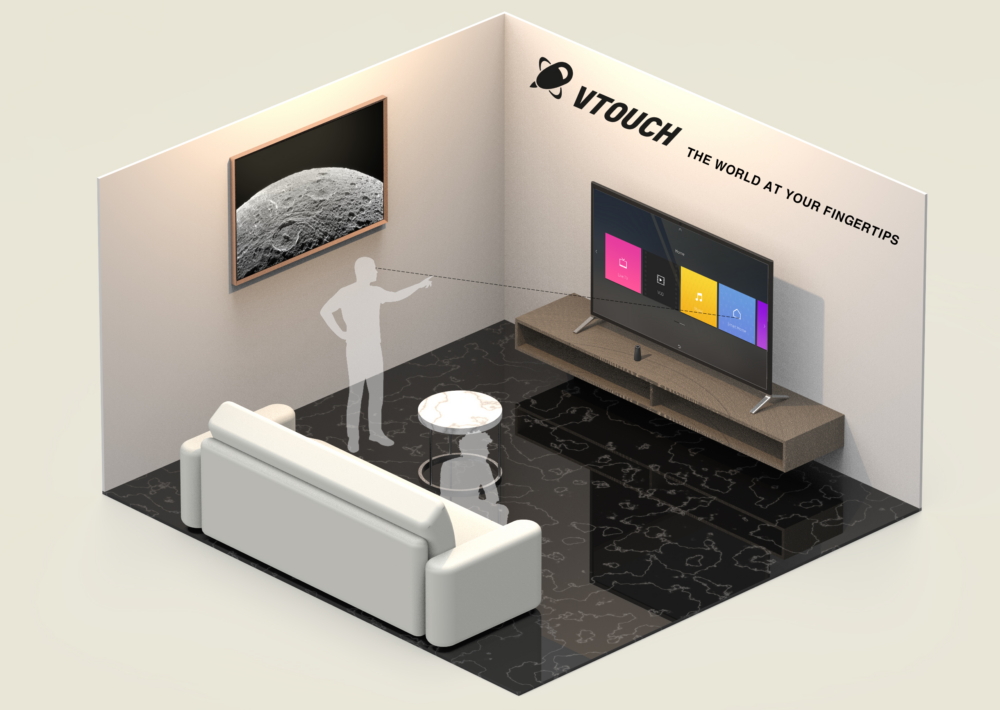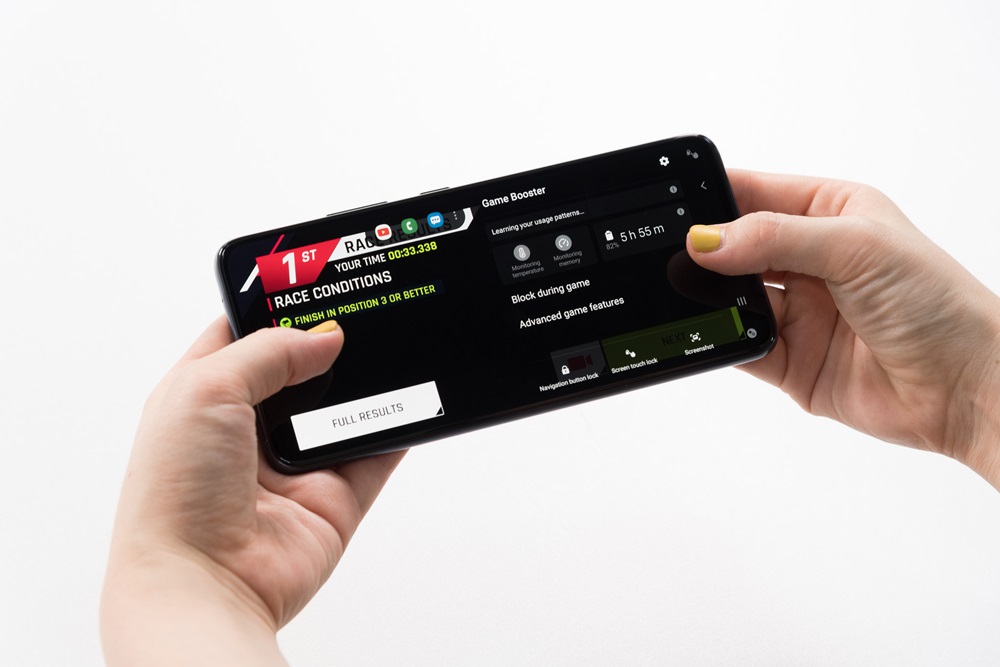Samsung Electronics announced that it will be showcasing five innovative projects from its C-Lab Inside program as well as products from four start-ups participating in its C-Lab Outside program at CES 2020, the world’s largest consumer electronics exhibition. The C-Lab booth will be located at Eureka Park, Sands Expo, where upcoming start-ups across the globe will be featured from January 7 through 11.
“We will actively support C-Lab to create products that reflect the latest market trends and customer demands and will showcase outstanding projects and startups of C-Lab in various global exhibitions,” said Inkuk Hahn, Vice President and Head of the Creativity & Innovation Center at Samsung Electronics.
From C-Lab Inside Projects to Successful Spin-offs
C-Lab Inside is an in-house idea incubation program that encourages and nurtures innovative ideas from Samsung employees, which began in 2012. This will be the fifth year C-Lab is participating in CES.
The new C-Lab Inside projects being unveiled for the first time at this year’s event are focused on a convenient and healthy lifestyle. They include: SelfieType, a virtual keyboard solution using the front-facing camera; Hyler, a smart highlighter pen that digitizes text printed on paper; Becon, a home care solution for scalp treatment & hair loss prevention; SunnySide, window-shaped artificial sunlight; and Ultra V, an ultraviolet monitoring sensor and service.
Since its inception, a total of 40 Samsung C-Lab alumni projects have launched as fully-fledged start-ups, independent from the company. And eight of these will be showcasing their latest innovations and products at CES 2020 at their own booths, seeking new opportunities to expand their reach. These successful spin-offs include Linkflow, Welt, Linkface, Lululab, Mopic, Monit, AnaloguePlus, and Luple.
Linkface is notable in that it has been named as Innovation Honoree of CES 2020 for its ‘Dear’ headphone with a biosignal sensor to reduce the risk of hearing loss in children. Welt, Lululab and Linkflow also have been honored with industry awards for their respective innovations.
Four Start-ups Accelerated Through C-Lab Outside
Four new start-ups from C-Lab Outside will also be featured alongside projects from C-Lab Inside at CES for the first time.
Created in October 2018, C-Lab Outside began as a startup acceleration program to vitalize the start-up ecosystem and create more IT and technology-driven job opportunities in South Korea. Leveraging the successful experience of C-Lab Inside, C-Lab Outside expands the support to include ideas and innovations from outside the Samsung network. The start-ups selected for the C-Lab Outside program are provided with financial support, business collaboration, and opportunities to participate in global IT exhibitions alongside Samsung.
At this year’s event, the following start-up innovations will be featured: Circulus, a companion robot that uses interactive technology; FITT, a healthcare data-based ICT service; Vtouch, a technology that controls objects with gestures using cameras; and Smoothy, a multi-party video call service that supports simultaneous video and voice.
Samsung and the innovators behind these C-Lab Outside start-ups are looking forward to participating in CES 2020 and to have the opportunity to expand the market reach of their innovations. For more information about C-Lab at CES 2020, please visit the booth #51248~#51259 in Sands, Hall G (Eureka Park Marketplace) on January 7 – 10, 2020.
In addition to supporting innovations and entrepreneurship, Samsung is committed to carrying out its vision “Together for Tomorrow! Enabling People” by empowering future generations to achieve their full potential through various education projects.
Appendix 1. C-Lab Inside Projects
1. SelfieType

‘SelfieType’ is a virtual keyboard using the front-facing selfie camera. A proprietary SelfieType AI engine analyzes finger movements coming from the front camera, and converts them into QWERTY keyboard inputs. SelfieType requires no additional hardware and it is highly adaptable to various mobile devices such as smartphones, tablets and laptops.
2. Hyler

‘Hyler‘ is a smart highlighter that digitalizes analog texts from paper onto mobile devices. By highlighting with Hyler, users can simply collect the information and manage it with the app. When using ‘search mode’ in Hyler, it prompts the user with extensive search results, depending on various search engines or dictionaries linked to Hyler.
3. Becon

‘Becon’ is a scalp home-care service to prevent hair loss with the recommended solution based on scalp analysis. It consists of a hand-held device and a compatible app. The diagnostic device analyzes in real time ten conditions of the scalp such as hair follicle density, dead skin, sensitivity, temperature and humidity based on machine learning algorithm. It recommends the most suitable solution according to the result of the analysis to remedy the user’s scalp trouble. It also shows the trend of the scalp’s improvement through the app.
4. SunnySide

‘SunnySide’ is a window-shaped lighting device that produces artificial sunlight. It enables the user to enjoy the sunlight that changes by the hour by copying the full spectrum of the actual sunlight. It also helps users synthesize vitamin D from indoors or in places where there isn’t a sufficient amount of sunlight without worrying about skin aging or sunburn. It can be easily installed on the wall like a picture frame.
5. Ultra V

‘Ultra V’ is a new type of sensor and service that records ultraviolet rays daily. The sensor has a wide incident angle which makes it easy to integrate into wearable devices. With Ultra V, users can monitor and manage their skin condition and Vitamin D production which are influenced by accumulated exposure to solar UV rays.
Appendix 2. C-Lab Outside Startups
1. Circulus (http://pibo.circul.us)

Circulus showcases a humanoid robot, ‘piBo’ for single-person households. piBo provides guidance services such as simple conversation and news/weather/search information. It interacts with users based on emotional analysis of facial expressions and contents of conversations and gives appropriate responses with sayings, music and dance. Users are able to add new features and content which can be downloaded from its robot application store.
2. FITT (http://www.fitt.kr)

‘FITT’ is a PHR (Personal Health Record) healthcare data platform based on exercise tests. FITT provides three types of exercise tests; cardiorespiratory, posture and muscle strength. After a test, users receive an optimized and personalized exercise program catered to users’ health status compared to other people of the same age and gender. It also can predict possible diseases that the user may be exposed to such as high blood pressure, diabetes, cancer, stroke, heart attack, cardiovascular disease, etc. and prescribes personalized exercise programs to prevent the risk of getting these diseases.
3. Vtouch (http://vtouch.io/)

‘Vtouch’ enables users to control devices without physically touching them by tracking the user’s eyes and fingertips with its patented computer vision and deep-learning technologies. It can be applied to various industries such as smart cars, smart homes and digital signage to control different devices. It can also keep displays clean and safe from germs or bacteria.
4. Smoothy (https://smoothy.co/)

‘Smoothy’ is a group video chat application that can be accessed by up to 8 people at once. What makes Smoothy more special is that the video chat starts at silent mode when the call is first connected so that it allows users to answer the call anytime and anywhere. It also provides video calls using Samsung AR Emoji. Once users have their avatars, the AR Emoji can mirror facial expressions and motions in real-time which makes video calls more fun.
* This article was originally published here











 (Interposer-Cube) package solution.
(Interposer-Cube) package solution.






















